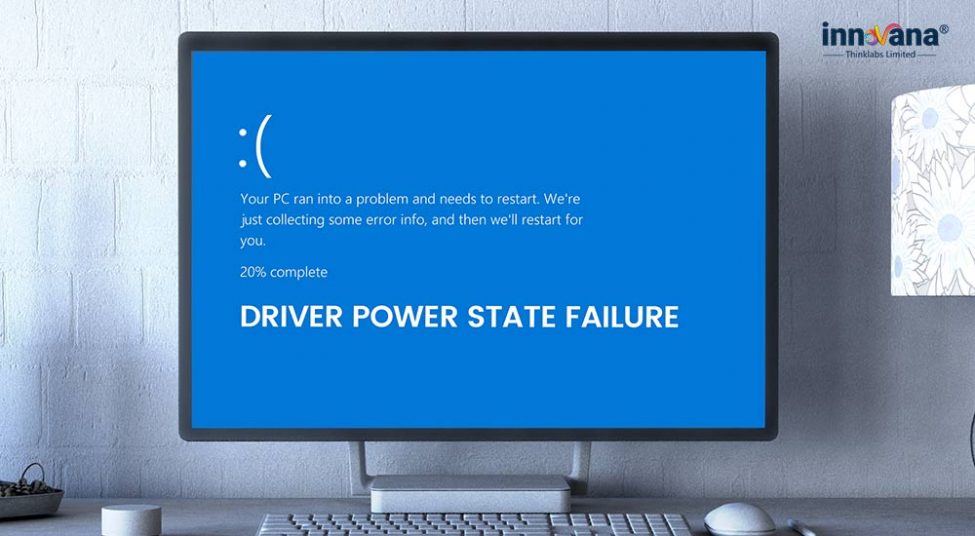
- #Microsoft driver power state failure windows 10 update
- #Microsoft driver power state failure windows 10 driver
- #Microsoft driver power state failure windows 10 upgrade
- #Microsoft driver power state failure windows 10 for windows 10
#Microsoft driver power state failure windows 10 update
Microsoft haven’t given any details about what the update does but the sleepstudy on the Thinkpad is now showing DRIPS time, online activity and application-registered activators.
#Microsoft driver power state failure windows 10 for windows 10
Cumulative Update for Windows 10 圆4-based systems KB3081438 arrived just four days ago and it’s a big one. The Thinkpad 8 had refused to register any sleep activity during my testing…until I got a Windows update which seems to have improved the situation. You can even dive down into the number of IP packets sent and received during a Modern Standby session. It will also show how much CPU activity there was within a Modern Standby session. To see if your MS-capable tablet has entered Modern Standby recently and to see how much power it’s used, applications and OS subsystems that have registered as ‘activators’ and other deep sleep issues you need to use the command powercfg -sleepstudy which will use raw Windows 10 power measurement data and summarize it. Intel SST Audio Device causing sleep problem on Thinkpad 8
#Microsoft driver power state failure windows 10 driver
Sleep issues can be analyzed using the powercfg -energy command (executed via cmd in administrator mode) which will monitor the PC for 60 seconds and report on devices and applications that are causing sleep issues.Īnalysis of the Lenovo Thinkpad 8 consistently reports that the Intel Audio driver is preventing sleep: Windows updates seem to be helping though. Both the Surface Pro 3 and Lenovo Thinkpad 8 enter a ‘sleep’ state but it’s rare that the deepest state (known as DRIPS – Deepest Runtime Idle Platform State) is being reached and I haven’t experienced any apps that send notifications in Modern Standby.
#Microsoft driver power state failure windows 10 upgrade
One of the problems with the upgrade to Windows 10 is that there could be driver issues that prevent Modern Standby from working and I see evidence of that on two Windows 8 tablets here that have been upgraded to Windows 10. Multiple Windows 10 updates aren’t helping anyone to get predictable PC behaviour and my testing proves there are problems. Testing Windows 10 Modern Standbyīased on my research and information from my followers it looks like Windows 10 Modern Standby Sleep is broken. In Windows 10 there’s evidence that it’s a bit broken. Updates are helping but there are still issues. Music would stream during sleep and notifications from Facebook, MSN News, Twitter, Alarms and other services would also be allowed through as sound notifications but it requires a very tight hardware, device driver and software build for it all to work. In Windows 8 you could run Skype in the background under Sleep mode and still get notifications. Modern Standby Windows Store application model. Other Activators include Windows Update, audio playback, image download, geofencing settings and others. Background Tasks registered in the so-called Background Infrastructure are one of many ‘Activators’ that can bring the processor out of deep sleep to perform actions.

These activities are strictly controlled through scheduling and usage limits. Windows 10 Store applications can register a Background Task that allows them to run while in the MS state which is how notifications, audio streaming, app updates and other activities can continue to work in Sleep, turning a Windows 10 tablet into an always-on PC. The guideline for MS battery usage has been removed (was 5% in 16 hours which I saw working in just a few cases out of many, many tablets that I’ve tested over the last 2 years.) but there’s now a ‘recommendation’ that a PC lasts for 9 days or longer when in MS mode.

If a PC is using MBB the system continues to search for WiFi as a ‘cheaper’ connectivity option. As before, all desktop apps are paused. Network connectivity via WiFi, mobile broadband (MBB) and Ethernet are kept active in order for Windows Store apps be able to send and receive network data.

PCs with rotating hard drives can now use Modern Standby in a non-connected state. Modern Standby extends Connected Standby with more flexibility for different hardware designs.


 0 kommentar(er)
0 kommentar(er)
